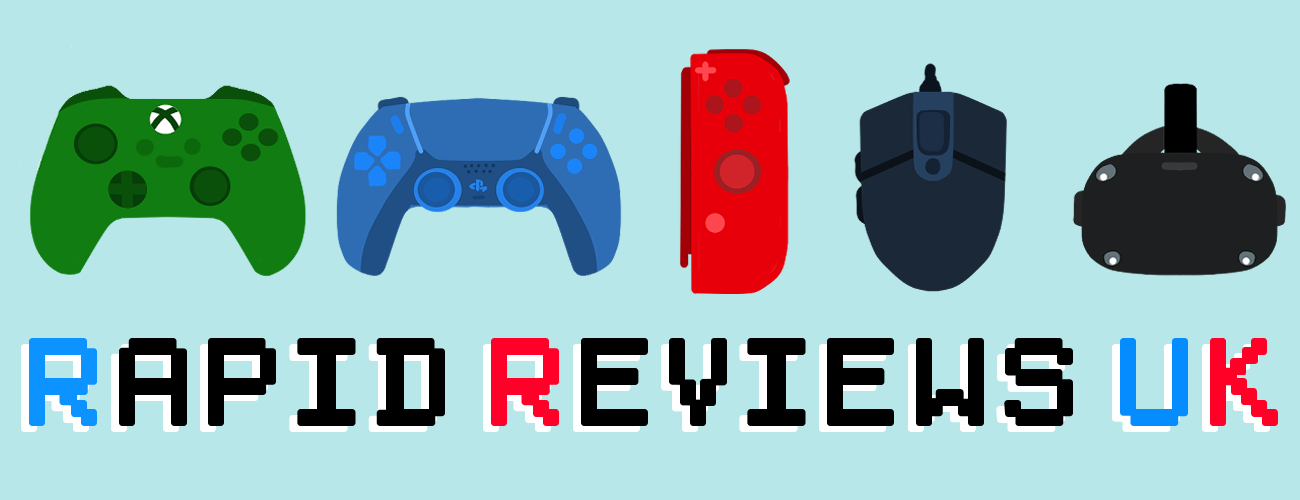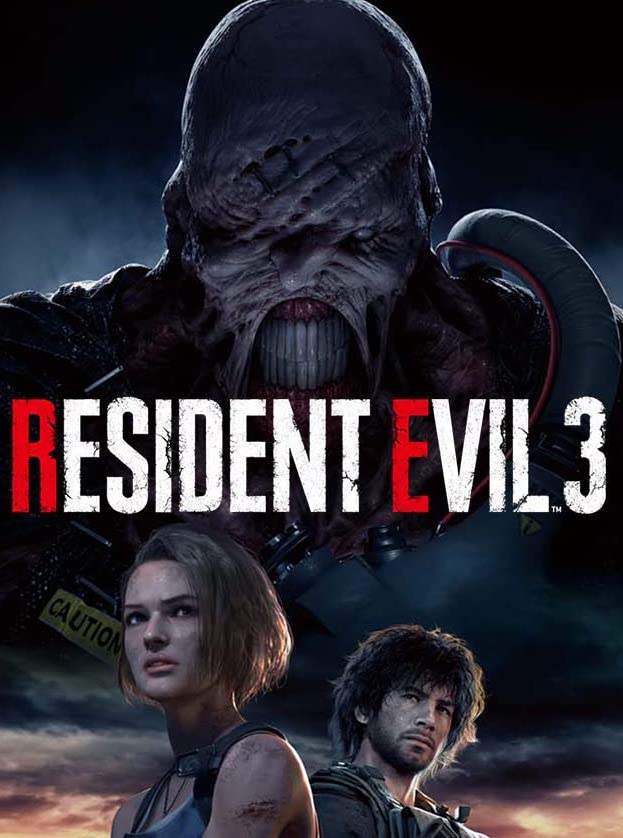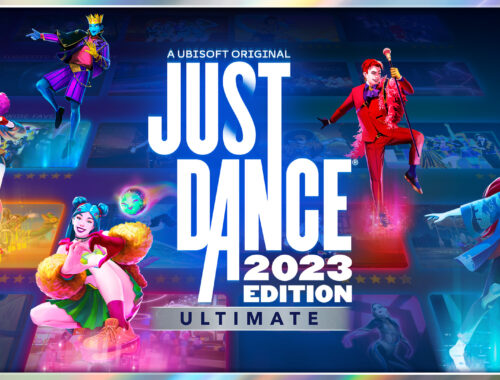Blue Reflection: Second Light Review
Fast Facts
Blue Reflection: Second Light
Developer: Gust Co. Ltd.
Publisher: Koei Tecmo Europe Ltd
Website: https://blue-reflection.com/secondlight/uk/
Genre(s): Role Playing
Platform: PlayStation 4 (also available on PC – Windows and Nintendo Switch)
Age Rating: PEGI 12
Release Date: 9/11/2021
Price: £49.99+
A code was provided for review purposes
Reflecting on Blue Reflection: Second Light
Blue Reflection: Second Light is a narrative-driven role-playing game where a group of schoolgirls get transferred into an unknown world and must fight demons. Was this otherworldly experience truly out of this world? Find out in this Rapid Review.
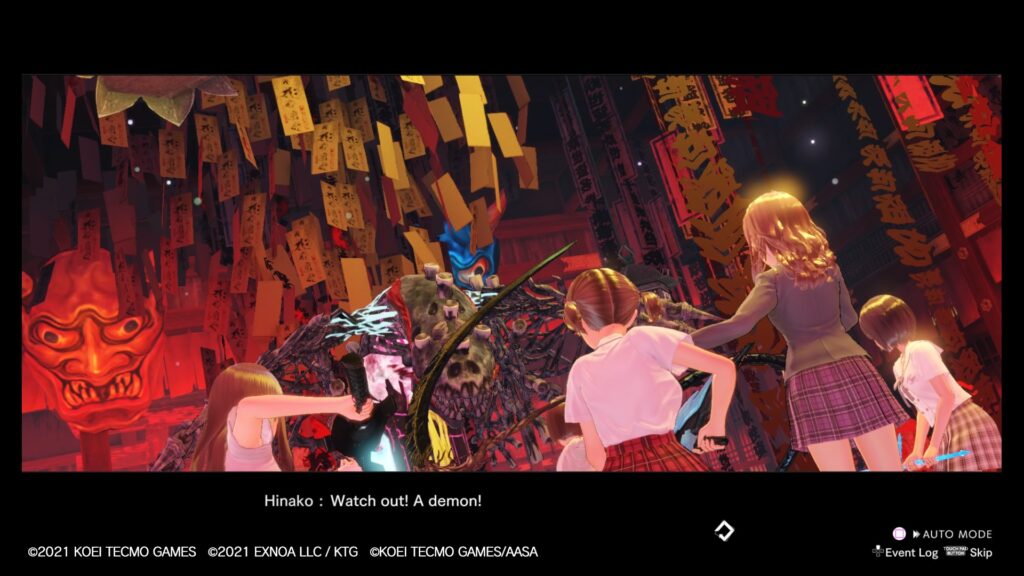
The first thing that stood out to me about this game was simply how long in-game cutscenes are. I enjoyed having cutscenes and traditionally like getting to know characters in a game. Content-wise, Blue Reflection: Second Light is very detailed. I enjoyed how the game presents each element slowly and then expands upon it. At the same time, however, this slow build-up had me reading long text sequences with paragraphs of dialogue. This was not necessarily a bad thing as I could skip the cutscenes if I wanted to, but I value learning about lore, and was excited to see what story the developers would tell with various characters working together from different lifestyles.
Unfortunately, the story in Blue Reflection: Second Light was not wholly engaging. Though I liked the overarching themes and thought the premise was interesting, the minute-to-minute conversations felt bland. None of the characters disagreed, so the dynamic between the girls seemed impossible. Moreover, despite coming from various backgrounds, each character acted similarly. Sadly, the characters were not distinct enough to get me immersed in their stories, and these individual stories were not detailed enough to hook me. Even some of the more interesting characters hardly breached surface level. For example, while one character can speak to a god, she is unable to do so in their world, invalidating her uniqueness. I wanted the developers to emphasize these differences more and alter the overarching story because of it. While the story worked, I was not totally immersed.
Moving to the Tempo
While I have seen similar story arcs in other forms of media, I have not played a role-playing game with combat mechanics like Blue Reflection: Second Light. Granted, I rarely play role-playing games and I have not played the prequel, but I enjoyed learning the gameplay mechanics. Instead of traditional turn-based gameplay, this game features a meter that fills up over time reminiscent of the ones used in tug of war summoning games. Once the meter reaches a certain point predetermined by each move, I could act. This allowed me to use a move when my meter reached the corresponding amount of points required. Moreover, consecutive hits without being damaged by a massive move built a combo which increased my damage output. Plus, each action I took increased the velocity of the meter. I thoroughly enjoyed this mechanic, as it was complex, unique, and rewarded my strategies.
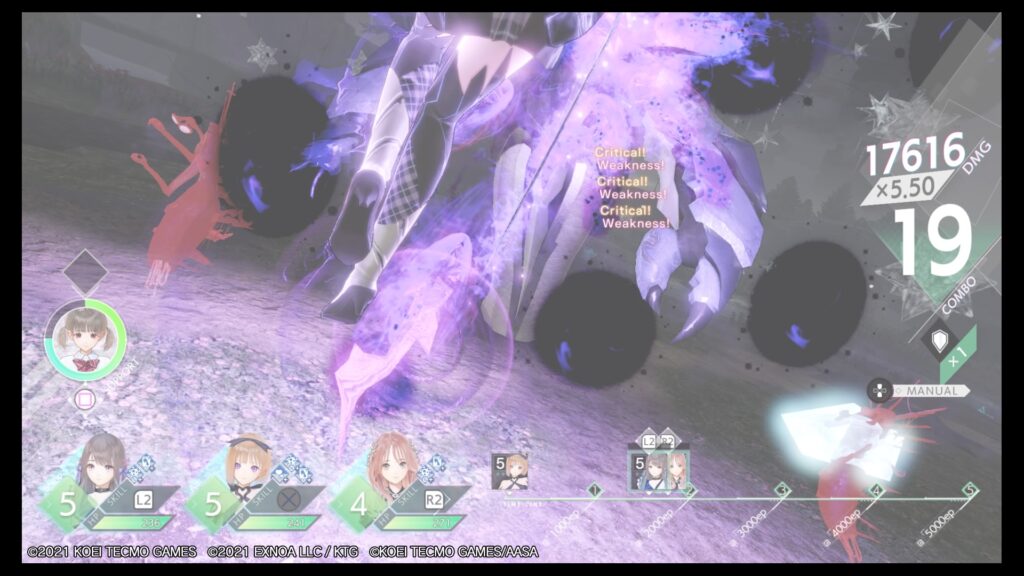
Additionally, each of the playable girls has unique abilities that alter the combat. They each specialize in their own areas such as protection, damage, increasing the combo meter, or support. Some of the characters even have multiple roles. I liked the diversity of the various characters. However, I rarely found myself deviating from one playstyle. While there were different team combinations I could explore, I ended up using the same four characters for the majority of my playthrough.
The customization does not stop there though. I could unlock gear pieces and talents to change the statistics of my characters. While some of these were simpler, only increasing attack or defence, some of them revolutionized the gameplay. For example, one augment allowed me to increase the likelihood of an enemy attacking a specific member of my party, potentially saving my glass cannon from unnecessary damage. There was plenty of customization available.
Repeat after Me
Despite the multiple options for team selection and gadgets, I rarely found myself experimenting with new combinations of characters. Even though some characters were weak to some of the enemies, I never felt overly disadvantaged by my position, and instead would have been more inconvenienced to go into the menus and change my loadouts. This contributed to the game feeling monotonous, and as though each battle had the same outcome. This was further compounded by how similar the enemies were. While there was a lot of variety, especially at the beginning of the game, after a while, each of the enemies started to seem like other enemies I had faced. I did not find them distinct, and I rarely established a connection with them.
This tedium was reinforced by the side quests. Instead of palate cleansers, any of the side quests either led to more dialogue or the same gameplay that I had been experiencing. This honestly was not so bad, as many of these quests were optional. However, meaningful improvements were tied to these quests, so regardless of whether they were enjoyable, I felt obligated to complete many of them.
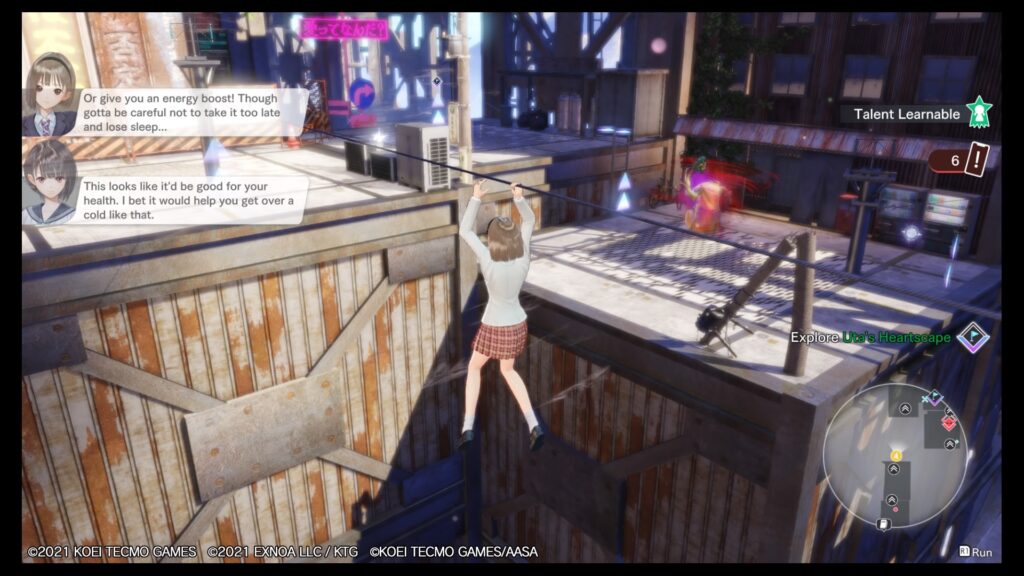
Blue Reflection: Second Light only really had a drastically different gameplay loop when I was fighting bosses. These enemies had attacks that dealt massive damage, and some even reset the combo meter. However, each was possible by leveraging the different abilities of my party members. The boss fights were highlights, and I enjoyed fighting each one. Still, they were not overly different from each other. Overall, they did an excellent job breaking up the gameplay loop but from boss to boss, there were very minimal differences. This game features a lot of great elements, but they often overstay their welcome and get repetitive.
Scaling
Though the offerings did stagnate after a while, Blue Reflection: Second Light does an incredible job in the beginning slowly introducing new mechanics. Considering the vast array of concepts and ideas, I was pleased with how easily I was able to pick up each one yet also by how much depth each mechanic had. Unfortunately, there were no substantial new mechanics towards the second half of the game, so while that allowed me the room to master the preexisting content, I was constantly looking for something more or another new way to fight.
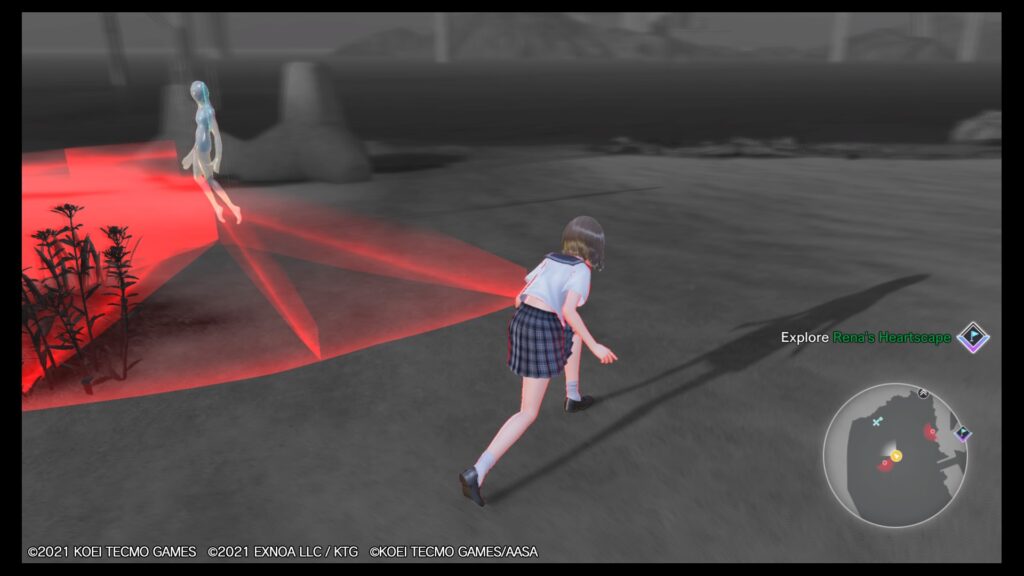
The same thing could be said about the overworlds. Another major part of Blue Reflection: Second Light is exploring areas to gather resources. Each character has their own world to explore. Initially, each new world felt expansive and distinct. However, after a while, my wonder dissipated, as they each followed the same formula. There were rarely any puzzling mechanics, and the only purpose of the hub world is to break up the fights with exploration. I enjoyed the idea of foraging for resources, but it never felt rewarding. I never felt worried that I might run into a more powerful enemy, as regardless of how many resources I was carrying, I could always outrun them. The lack of challenge prevented the collecting aspect of the game to resonate with me.
Even the difficulty itself rarely ramped up. Apart from the final boss, where I suffered a few deaths, I did not have any issue completing the title. This was not innately a bad thing, and the game does have an unlockable hard mode (as well as a preexisting easy mode), but the game’s lack of difficulty failed to incentivize me to learn new strategies or play the game perfectly. Many areas made this game bland.
Reflecting on the Visuals and Sound
While many of the areas did not differentiate themselves with their styles of gameplay, I was still able to explore plenty of gorgeous locales. The areas and enemies were both aesthetically pleasing and fitting of the theme. Even my characters were customizable. There were not too many options there, but each character could wear different outfits. This made my experience somewhat personal, and I liked seeing the different outfits the girls got to wear.
The soundtrack was similarly lovely. Blue Reflection: Second Light features wonderful orchestral music that filled my room with soothing melodies. It was calming and uplifting at the same time, keeping me engaged in progressing as soon as possible. I thought this soundtrack fit the game well.
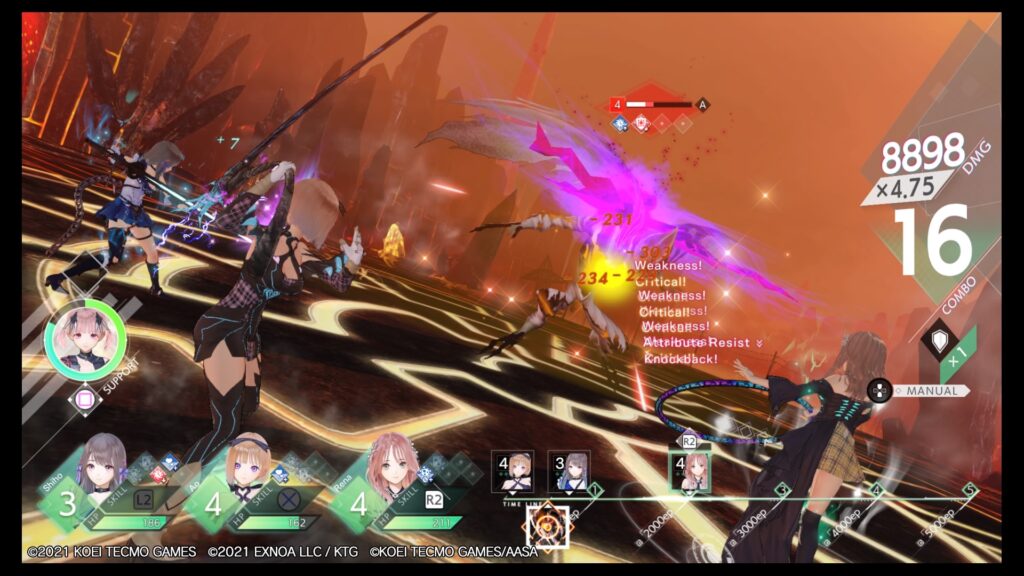
The game even featured voice acting for the main storyline. While there was no English version, the Japanese voice acting made the game feel game lively and genuine, even though I could not understand any part of what they were saying (of course, all the words are written in English subtitles). The presentation of Blue Reflection: Second Light was bolstered by both the visuals and sounds.
Overall, Blue Reflection: Second Light is a good experience. While there is a lot of repetition, the combat mechanics were innovative and I enjoyed taking out enemies, especially bosses. Plus, the story, while it is long and filled with seemingly meaningless dialogue, is charming and has some good parts to make it a worthwhile read. Blue Reflection: Second Light is not a game I am going out of my way to recommend, but there is a lot of content here to enjoy, especially if you are not opposed to repetition.
Rapid Reviews Rating

3.5 out of 5
3.5
You can purchase Blue Reflection: Second Light on the PlayStation Store here

You can find and read our reviews on OpenCritic.
